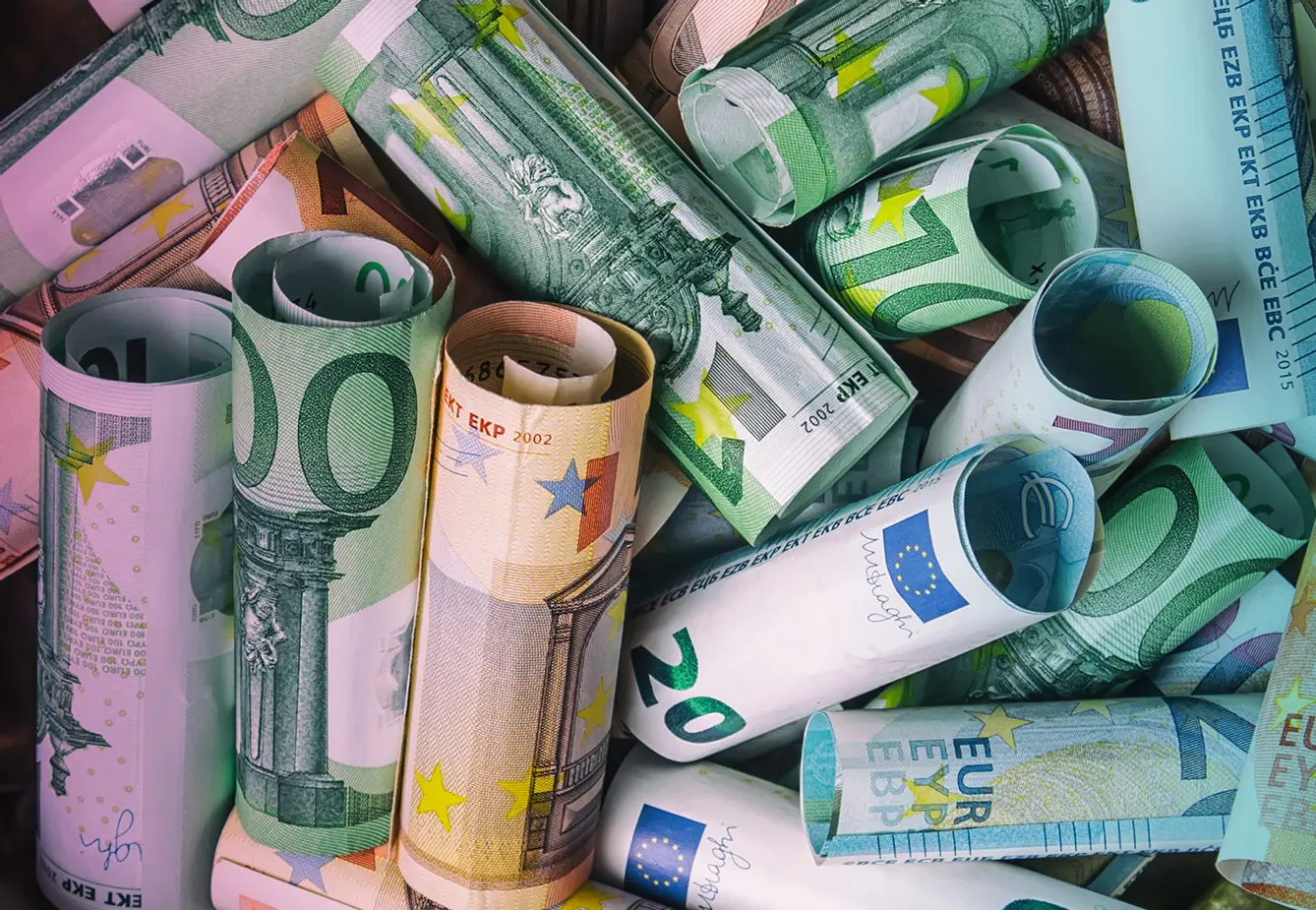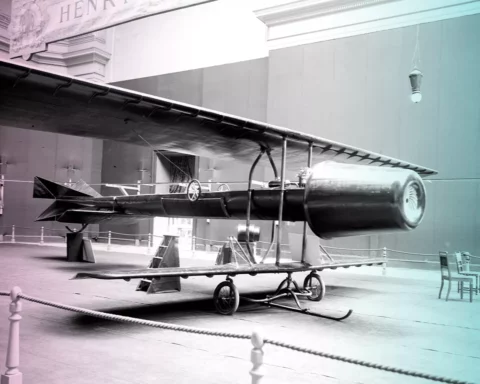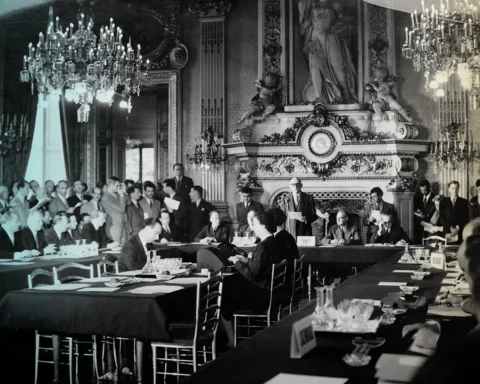Truth be told, more and more countries of the European Union tend to opt for the common currency. From a purely personal point of view, economy aside, I find it rather sad. There was nothing more thrilling than going to an exchange office and preparing yourself for travels by changing your well-known notes into foreign, often colorful money from a different country.
Without a doubt, currencies constitute an important part of a country’s heritage and culture. It often represents the journey the country took to get to the place it is currently at (currency – currently – see how it nicely resonates?) Also, the notes and coins often feature figures or symbols important to a country’s history. “Euro does too,” you will be quick to tell me. Perhaps it does. But on your travels, how many times did you actually come across the coin or note representing Spain when in Spain or France when in France? It is not that obvious anymore, now is it?
So which countries of the Three Seas Region currently accept euros, and which countries still use their national currency? The journey would not be complete without a nostalgic stop reminding us of the currencies the Euro Zone states used to pay with in the past.
The Euro as Central European Currency
First, let’s take a look at the Euro Zone countries.
Austria
Austria joined the Euro Zone in 1999 as one of the first countries to do so.
Historically, you would pay here with Austrian schillings. Introduced in 1925, one schilling was divided into 100 groschen. But it wasn’t always the schilling. During the times of the Austro-Hungarian Empire, the currency changed. At first, since the 16th century, it was florin, which was the currency of the Holy Roman Empire. Its division was rather complicated as one florin stood for 8 schillings, which translated into 60 kreuzers, which could be split into 240 pfennigs. Phew!
No wonder someone smartly decided to simplify the florin in 1857, and from then on, it would have been divided into 100 neukreuzers. When the gold standard was introduced, the Empire turned to the Austro-Hungarian crown in 1892, which was then kept as the Austrian crown after the Empire’s dissolution in 1919. As mentioned above, the crown gave way to the schilling in 1925. The schilling remained in circulation with the euro until 2002.
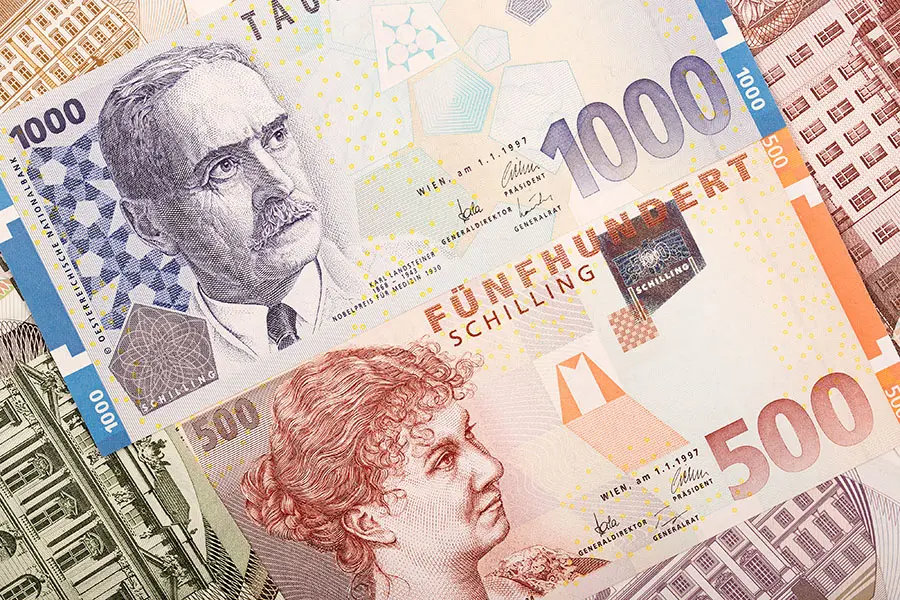
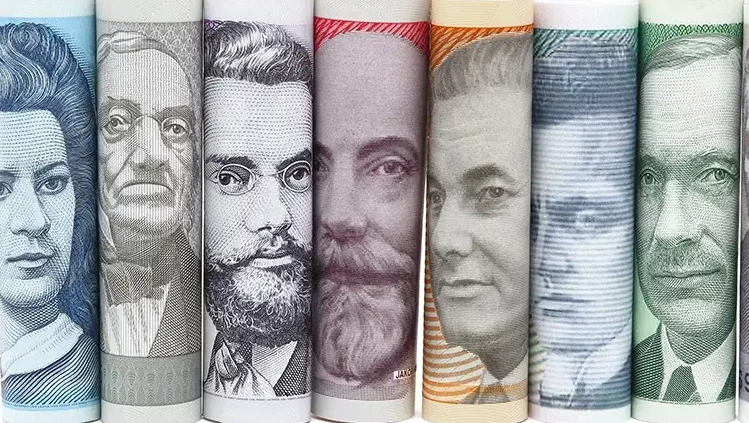
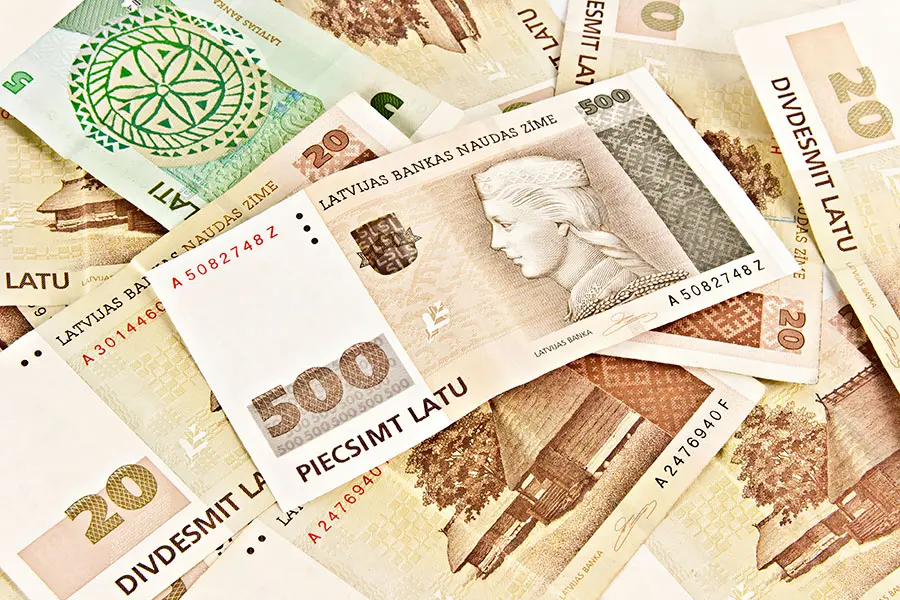
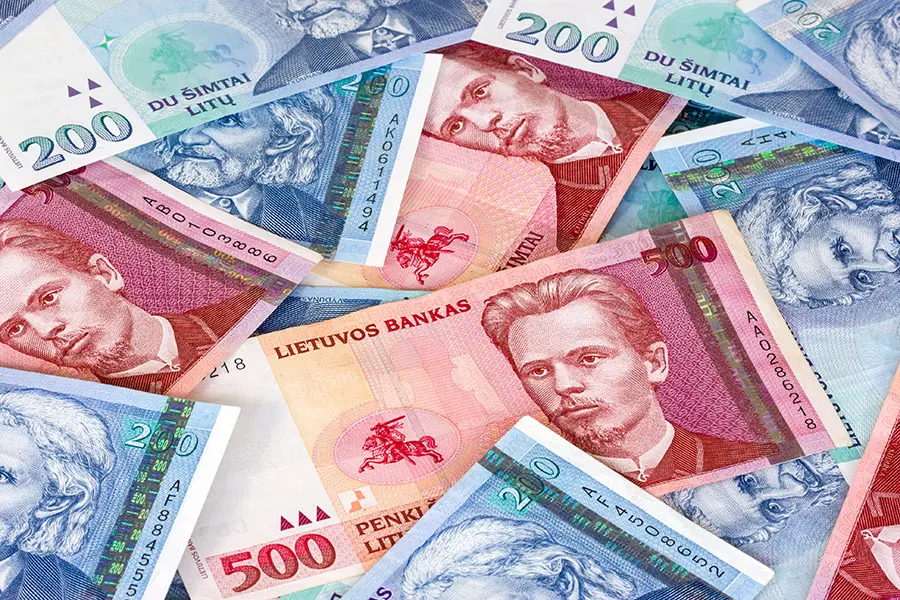
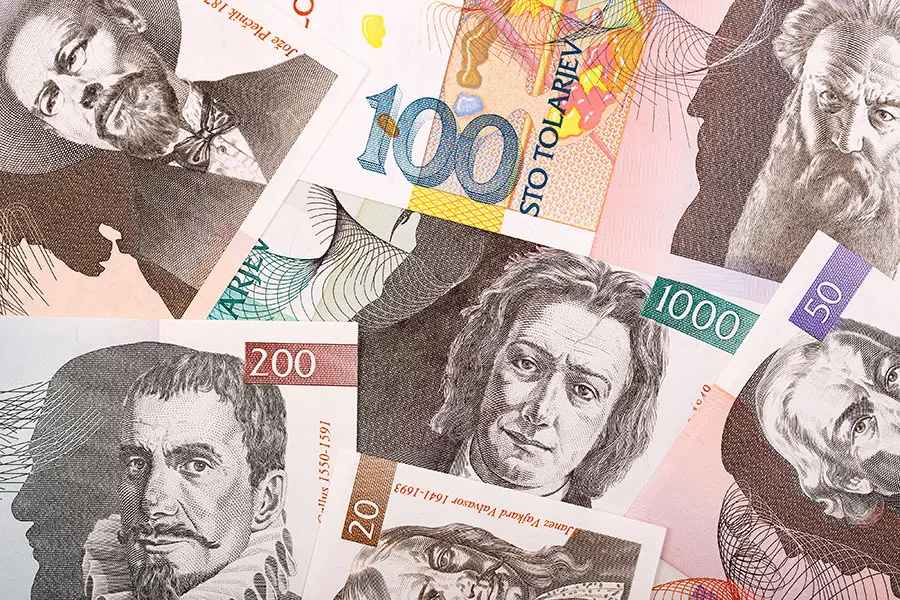
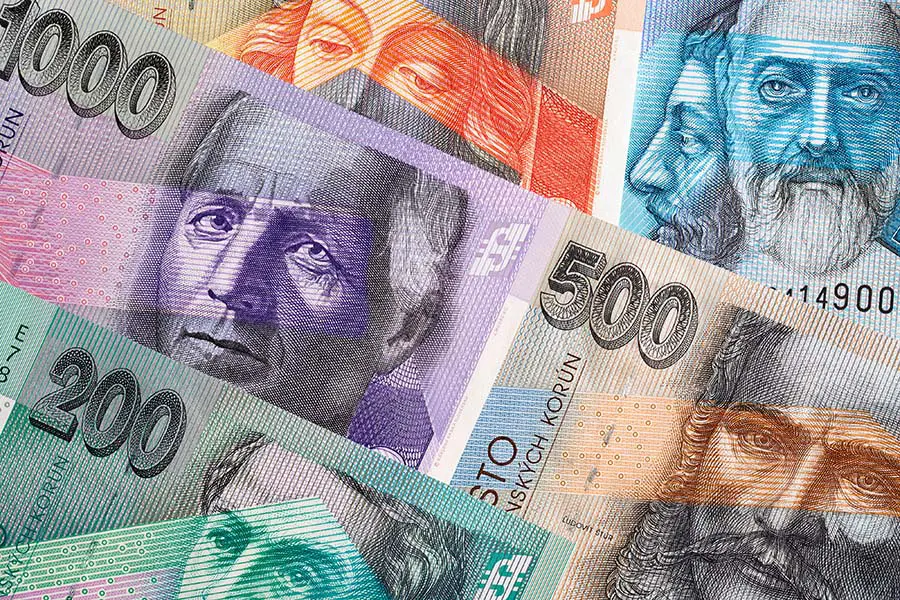
Estonia
Estonia joined the Euro Zone in 2011.
As Estonia was a country that was under constant occupation by other realms, the first national currency emerged alongside the independence the land obtained in 1918, after the end of the First World War. The first Estonian currency reflected the previous German mark and was known as the Estonian mark, which was divided into 100 penns.
The introduction of new currency is not an easy process, and the then newly-established Eesti Pank, apart from mark notes, allowed the usage of exchange notes in the 1920s. As inflation struck, the country badly needed a monetary reform, which came in 1924, introducing the Estonian kroons. One kroon was divided into 100 senti.
The introduction of the new currency was finally completed in 1936, just three years before the next worldwide conflict. During the Soviet occupation, the kroon was replaced with USSR’s chervontsy, roubles, and kopeks. The kroon made its comeback in 1992, after the liberation from the Soviet regime.
Latvia
Latvia joined the Euro Zone in 2014.
Similarly to Estonia, Latvia became an independent country in the wake of the First World War. At that time, three official currencies were accepted in the newly formed Latvia (German marks and Russian roubbles, kopecks, and kerenkas). Latvia needed a national currency. In 1919 Latvian State Treasury issued Latvian roubles and Latvian kopecks. In 1922 the country introduced its national currency – the lat, where one lat was divided into 100 santīmi. When the country fell under Soviet occupation after the Second World War, roubles, kopecks, and kerenkas made their comeback until 1993, when Latvians regained full control of the country, and the situation was favorable to reintroduce Latvia’s national currency.
Lithuania
Lithuania joined the Euro Zone in 2015.
The first Lithuanian coin, the denar, was minted by Wladyslaw Jagiełło and Vytautas. In the 16th century, when Lithuania was tightening relations with Poland, king Sigismund the Old decided to unify the system between the two countries and also adjust it to the one functioning in the Kingdom of Prussia. Still, Lithuanian coins were also in circulation.
It wasn’t until king Stefan Batory nearly 60 years later, that a common currency for the Crown (Poland) and Lithuania was introduced and executed. As the particularities of the accepted currency in the Commonwealth were rather complex, let us have a look at the last known, simplified (!) division of circulating coins. The coin of the highest value was the dukat (czerwony zloty), which was equal to 2 talars, equal to 16 polish zloty, equal to 64 silver groszy, in turn, equal to 480 copper groszy. These could be further divided into coins of fragmentary value like, for example, one and a half talar (good luck at the marketplace paying for your lettuce!)
Anyway, once the partitions divided the lands of the Commonwealth, Lithuania found itself mostly under Russian rule. Independence came only in 1918 in the wake of the First World War, giving the beginning to the national currency of Lithuania – litas, where one lita was divided into 100 centas. The Soviet occupation after the Second World War introduced the roubles. Three years after regaining independence in 1990, Lithuania returned to its national currency – litas.
Slovakia
Slovakia joined the Euro Zone in 2009.
Slovakia lands, similarly to other lands in Central Europe, have seen many currencies introduced by subsequent rulers. After the fall of the Austro-Hungarian Empire and its crown, the new state of Czechoslovakia emerged in the wake of the First World War. The new currency for the state was a necessity, and a Czechoslovak koruna was introduced in 1919.
One koruna was divided into 100 halierov. During the Second World War, the koruna disappeared to return after the war. Once Slovakia became an independent state in 1993, it agreed to separate the currency from the Czech Republic and started producing its own Slovak koruna, divided into 100 halierov until the euro.
Slovenia
Slovenia joined the Euro Zone in 2007.
After the First World War, today’s Slovenia became a part of Yugoslavia (firstly, the Kingdom of Slavs, Croats, and Serbs, but let’s not get overly technical). In the beginning, Yugoslavia introduced a provisional talar, but in 1918 settled with a dinar, divided into 100 para. When Slovakia broke away from Yugoslavia, it introduced its national currency in 1991 – the Slovenian tolar, which was divided into 100 stotinovs.
The In-Betweener: Croatia
Currency: kuna. Croatia is on track to enter the Euro Zone as of 1 January 2023.
A part of the Austro-Hungarian Empire, it used the crowns. After the First World War, it became a part of Yugoslavia and used the previously mentioned dinar. Kuna, the national currency of Croatia, first made its appearance during the Second World War, when Cortia briefly turned into an Independent State of Croatia, created by Germany and Italy under fascist regimes.
There was nothing ‘independent’ about the state, but the fact remains that Croatian kunas emerged at that time. With the difference that one kuna was divided into 100 banica. Then it was back to dinar until true independence for the country. In 1994, Croatia reintroduced kuna, which divides into 100 lipas. But hey, why kunas? Kuna in Croatian stands for a marten in English. Two running martens are visible in the coat of arms of the Slavonia region.
Since martens’ fur was an expensive commodity in medieval times, it was used as a payment method, and hence, probably to honor tradition, kunas made their big comeback as modern money.
Resisting common currency
The remaining countries still use their national currencies. So what to convert your currency into?
Bulgaria
Currency: lev. Expected to join the Euro Zone as of January 1, 2024.
Lev is Bulgaria’s official currency. In old Bulgarian, the word ‘lev’ stood for the lion (nowadays, it is pronounced as ‘lav’). Incidentally, the lion was adopted as the symbol of Bulgaria in 1878 after its liberation from the Ottoman Empire. The animal stands for strength and courage and can be seen all over the country (its depictions, of course – not living creatures.) One lev is divided into 100 stoinki. The name translates to a hundredth, which is pretty straightforward. The currency was first admitted into circulation in 1881. It is interesting to note that during the Soviet occupation, Bulgaria managed to keep its national currency. However, it was pegged to the Russian ruble.
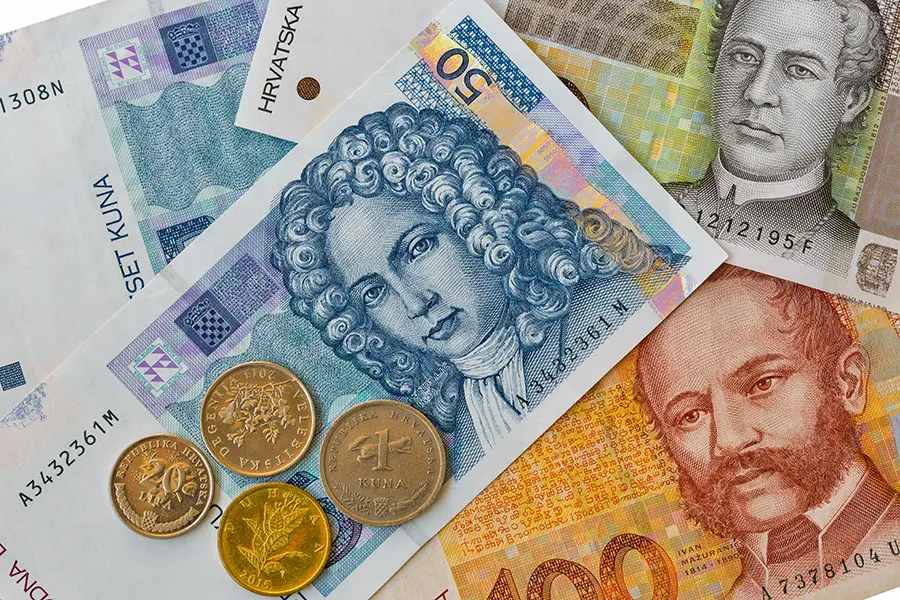
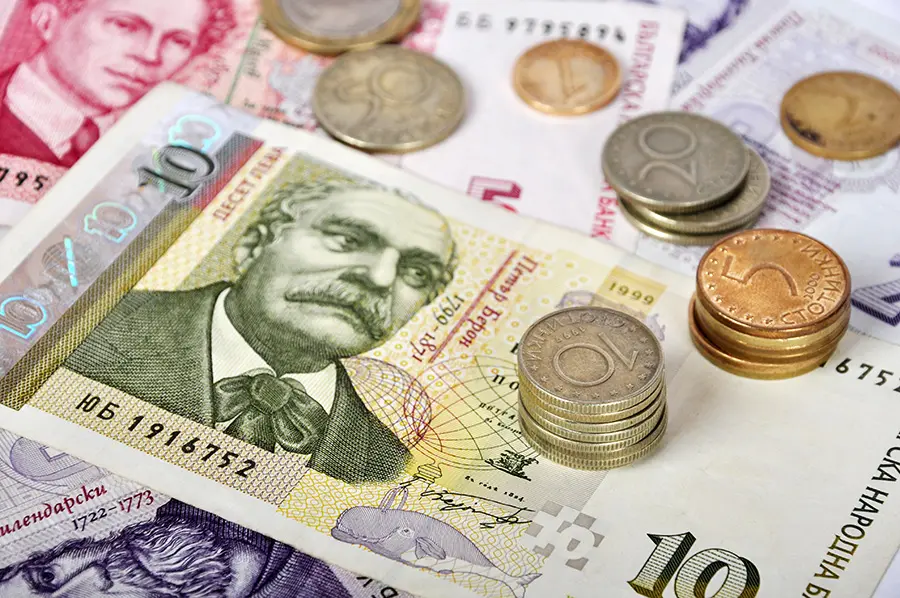
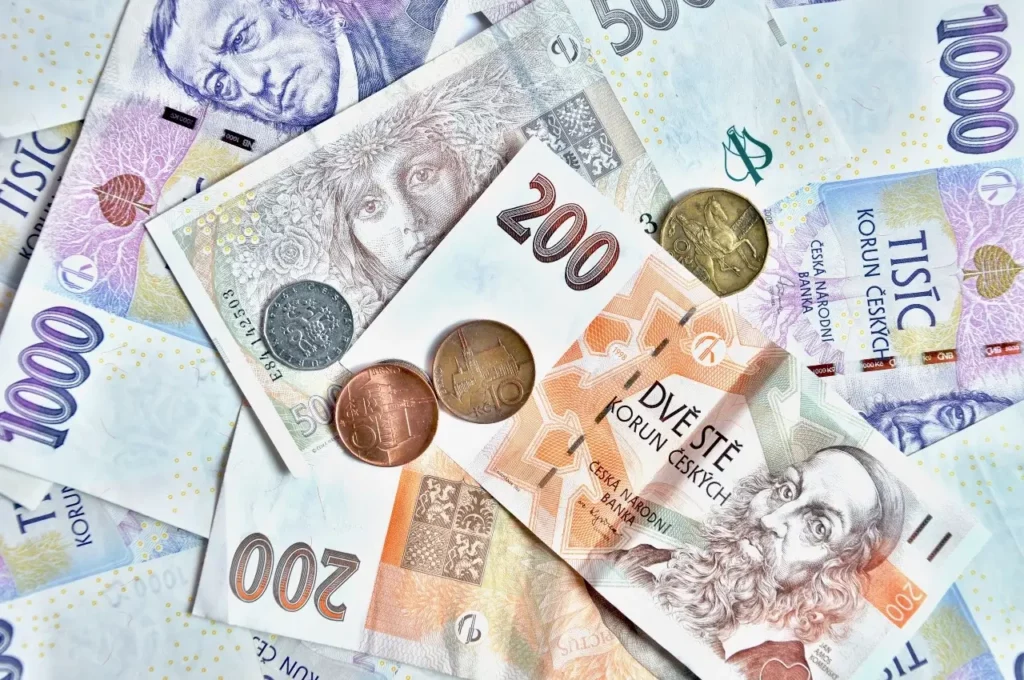
Czechia
Currency: Czech koruna (crown)
Czech territory was under the Austro-Hungarian Empire, meaning the currency in Czech lands was the Austro-Hungarian florin first, and then the crown. Upon its liberation from the Austro-Hungarian rule in the wake of the First World War, Czechia became a part of Czechoslovakia and, as if from sentiment, became the only country to keep the imperial name of the coin – a Czechoslovak crown (koruna), divided into 100 haléřů. When Czechia and Slovakia agreed to part ways and became two independent states, the common currency was split in 1993. Czechia kept the Czech koruna, which is divided into 100 hellers. Although the country joined the EU in 2004, public support for the new currency remains low. Last year, the Czech Prime Minister, Petr Fiala, announced clearly that “For the Czech Republic, (euro adoption) is not a topic on the table at the moment.” Thus, it looks like the Czech crown is going to stay with us for a while.
Hungary
Currency: forint.
During the times of the Austro-Hungarian Empire, Hungary was using the imperial florin and then the Austro-Hungarian crown. Keep in mind the name ‘florin’ as we are going to return to it in a tick. After the fall of the Empire, in the wake of the First World War, Hungary implemented the currency of the Hungarian korona. However, vast inflation quickly depreciated the currency.
To save the economy, the Hungarian government introduced a whole new currency of pengő, divided into 100 fillér, in 1927. The new currency did help, but it did not stand the test of time. Lasting for only 20 years, it gave way to Hungarian forint. Now, what is interesting is how history has repeated itself. The Hungarian word ‘forint’ stands for the ‘florin’, derived from the Italian florin (former currency of Toscany). Florentinus (later: forint) was a gold-based currency introduced in Hungary in 1325 by King Charles Robert and copied by several other nations before the introduction of the gold standard.
Now, with regard to the euro. The current crisis and inflation, with the forint losing about 8% of its value against the euro by mid-2022, brought back the discussion of the introduction of the European currency in Hungary. At present, nothing is set in stone. Rumor has it that Hungary might be looking at joining the EMR-2 next year, thus taking the first step in changing its longstanding national currency.
Poland
Currency: Polish zloty
The history of currency in Poland is a rather long one. If we were to mention all variants of coins accepted throughout the existence of the Kingdom and then the Republic of Poland, we would soon get lost. So let us only mention the most interesting transitional stops on its way to the Polish zloty.
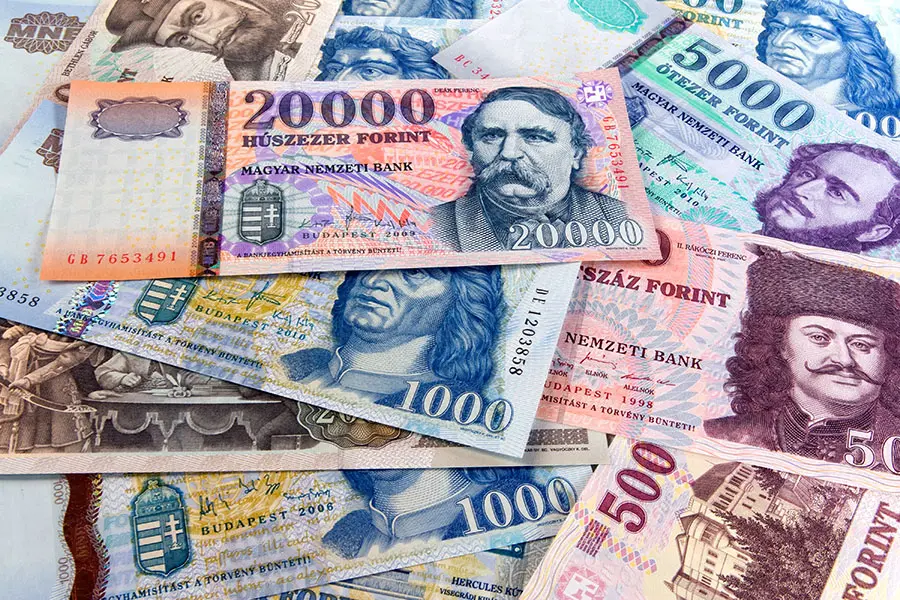
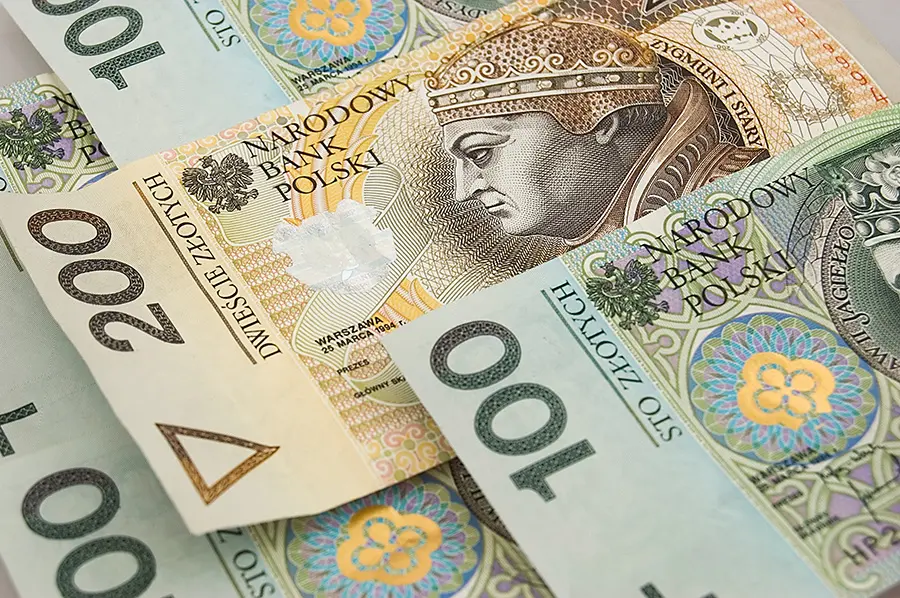
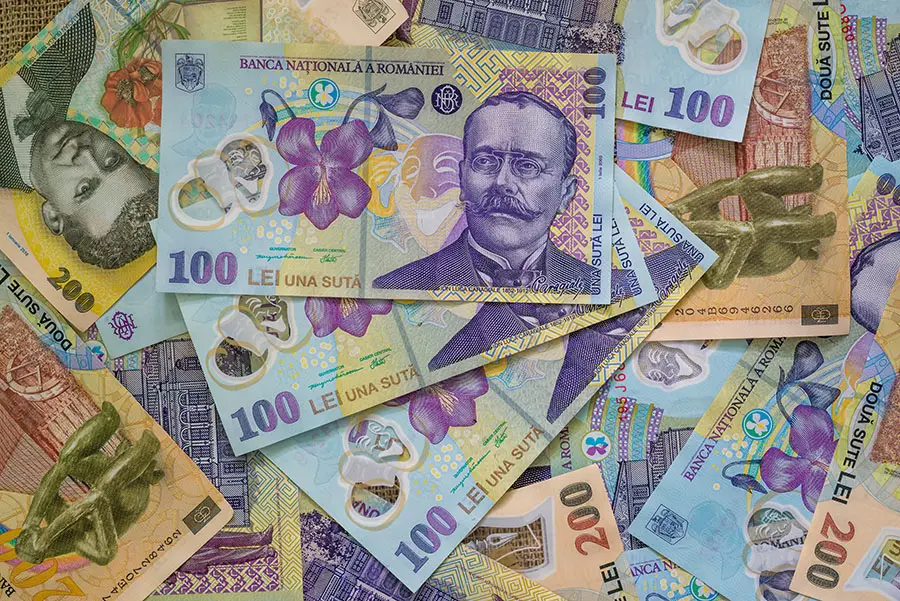
The first Polish coins were minted using primarily silver by Mieszko (either I or II – it is impossible to tell) circa the 10th century. The thin, round-shaped, and haphazardly minted denary featured a simple inscription: MISICO. The contemporary Polish zloty is divided into 100 grosze, and that was the earliest currency that functioned in Poland circa the 14th century and, by name, can be recognized today. Its value, of course, was not only diverse but also changed over the ages.
The Polish zloty came into use at first as an accounting value by the design of Sigismund I the Old. It was this ruler who introduced one of the most complex monetary reforms in Poland. The golden coin of a similar name was called the dukat or czerwony zloty (to differentiate it from the pure accounting value of the Polish zloty). In the wake of the First World War, Poland emerged using a new currency – the Polish mark. However, it was not stable enough, and by 1923 the inflation rate reached approximately 3300%! Wladyslaw Grabski came to the rescue.
He completely redesigned the entire system, and the Polish zloty became the country’s new (yet old) currency. Thanks to Grabski, the Polish zloty strengthened, becoming fully convertible and stable until the outbreak of the Second World War. This was an achievement since the starting capital of the Polish Bank was raised entirely by the people of Poland. They all chipped in, gathering a whooping equivalent of 29 tonnes of gold. After the Second World War, the zloty remained the official currency of Poland.
Its condition was, however, weakened firstly by the Soviet-installed communist government and later, after the regime’s fall, by the changing economic conditions. At present, the Polish currency shows no signs of wanting to give in to the euro, with about 60-65% of Polish respondents recently declaring they would rather stick to their national currency.
Romania
Currency: leu. Hopes to join the Euro Zone in 2029.
The first attempt at creating Romania’s currency is credited to Domnitor Alexandru Ioan Cuza, who came up with the idea of the românul in 1860. Unfortunately, the Ottoman Empire, which was then ruling over Romania’s lands, denied his effort, and the currency never came into existence. After restoring the monarchy in the country in 1866, king Carol I successfully created the new national currency – the leu, which adopted the gold standard. One leu is divided into 100 bani (bani meaning simply ‘money’ in Romanian). The currency suffered many ups and downs, noting a 300% inflation in 1990, after the fall of communism, but resurfaced each time. Currently, despite the fact that the European Commission recently gave a statement saying Romania does not meet the necessary criteria to join the Euro Zone, the country remains hopeful to adopt the euro soon. In a recent study, as many as 77% of respondents declared they were in favor of swapping to the common European currency.
This brief history of how currencies changed in the Three Seas States is yet another example of their intertwined histories. It illustrates how the freedom and independence of each and every state came after a long struggle against the odds of fluctuating powers and influences.


